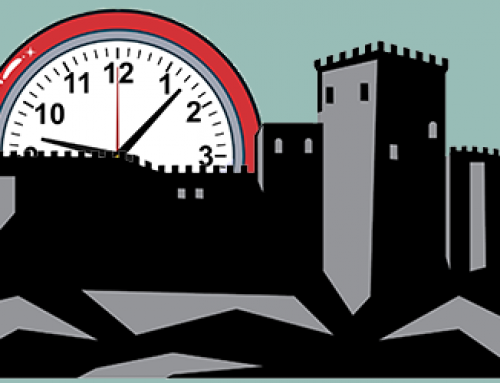Have you ever wondered how teams get anything done?
Do you share the responsibility with others to get work done—but don’t have any authority over them? The reality is, more and more people are finding that they have to get their work done through a team—regardless of whether that team is big, small, effective, ineffective, or somewhere in the middle.
So, how does a team become productive?
It might help if, from now on, you understood that teamwork shouldn’t be considered a group skill. Instead, teamwork is an individual skill and the responsibility of every individual in your team.
Not treating teamwork as an individual skill and responsibility allows team members to justify low performance by pointing fingers at others.
Shared responsibility = shared leadership
 When your team isn’t aligned, individual members may work extraordinarily hard, but their efforts don’t efficiently translate to team effort—resulting in wasted energy.
When your team isn’t aligned, individual members may work extraordinarily hard, but their efforts don’t efficiently translate to team effort—resulting in wasted energy.
When one person in the group is productive, then your group has a leader—who, unfortunately, spends much of their time prodding others to get work done.
However, when everyone is productive, there’s a commonality of purpose, a shared vision, and an understanding of how to complement one another’s efforts.
Amazing things happen when everyone commits to operating from a position of responsibility and accountability. Mistakes are viewed as opportunities to learn, communication becomes authentic and effective, and learning and progress happen fast.
First: What does your team need to accomplish?
Create a vision for the team. Establish clarity on what the team was formed to do.
In fact, the most important team building principle is simple: the task is the reason for the team. Teams are not defined by the people on them, but by what they must do. You must be willing to own results that are larger than yourself.
Teams should articulate their sense of common purpose. As teams define what is of primary importance, a whole new hierarchy of meaning emerges for the team and the organization as a whole.
Tip: Start with personal vision
 When a shared team vision starts with personal vision, the team becomes a tool for each member’s self-realization—rather than a machine they’re subjected to. Team members begin to stop thinking of the organization as a think to which they are subservient.
When a shared team vision starts with personal vision, the team becomes a tool for each member’s self-realization—rather than a machine they’re subjected to. Team members begin to stop thinking of the organization as a think to which they are subservient.
Most team members are eager to link their personal visions to the team and to the organization as a whole. It’s an important day in everyone’s life when they begin to work for what they want to build rather than to please a “boss.”
In fact, making sure that everyone is at the same level of motivation is far more important to successful teamwork than matching appropriate skills If members don’t have the all the required skills to accomplish a task, a high-performance team will improvise. The same isn’t true for motivation, however—it seems that every team performs at the level of the least invested worker.
The truth is, commitment to other members is a byproduct of having an individual stake in the collective outcome
Accountability is the glue that ties commitment to results
Accountability keep the team on track and moving forward in all aspects of development. Personal accountability is the belief that you are fully responsible for your own actions and consequences. It’s a choice, a mindset and an expression of integrity.
When we don’t hold ourselves and team members accountable to getting work done well and on time, there’s a tendency to become even more lenient and forgiving for slippages. A day becomes a week, a week a month. If it happens once, it’s that little bit more acceptable for it to happen again.
In addition, when we don’t hold ourselves accountable, the impact is exponential. Your delay becomes your team’s delay. The work they had planned gets impacted and that work potentially has further downstream effects.
Help your team recognize the positive aspects of what they contribute at work and prepare them to receive feedback on areas of improvement. Help them view the process as a stepping-stone to getting better at their job and, ultimately, happier at work.






